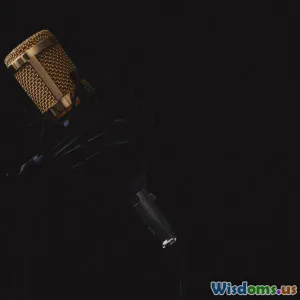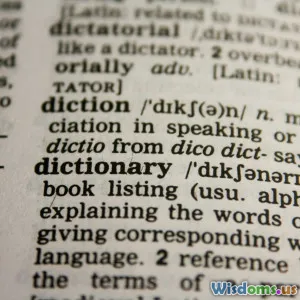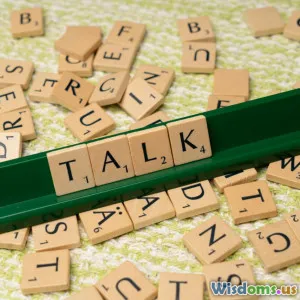
Beyond the Alphabet The Art of Articulatory Phonetics
16 min read Explore the fascinating world of articulatory phonetics beyond standard alphabets and uncover how we produce the human sounds of language. (0 Reviews)
Beyond the Alphabet: The Art of Articulatory Phonetics
The spoken word is more than a mere sequence of letters strung together. Behind every syllable we utter lies a well-choreographed ballet of lips, tongue, vocal cords, and lungs—a dance known as articulatory phonetics. More than just the backbone of linguistics, articulatory phonetics is the key to understanding language diversity, accents, and even the quirks that make us unique speakers. Let’s explore a discipline that goes far "beyond the alphabet," mapping out the living, breathing process of human speech.
The Building Blocks: What Is Articulatory Phonetics?
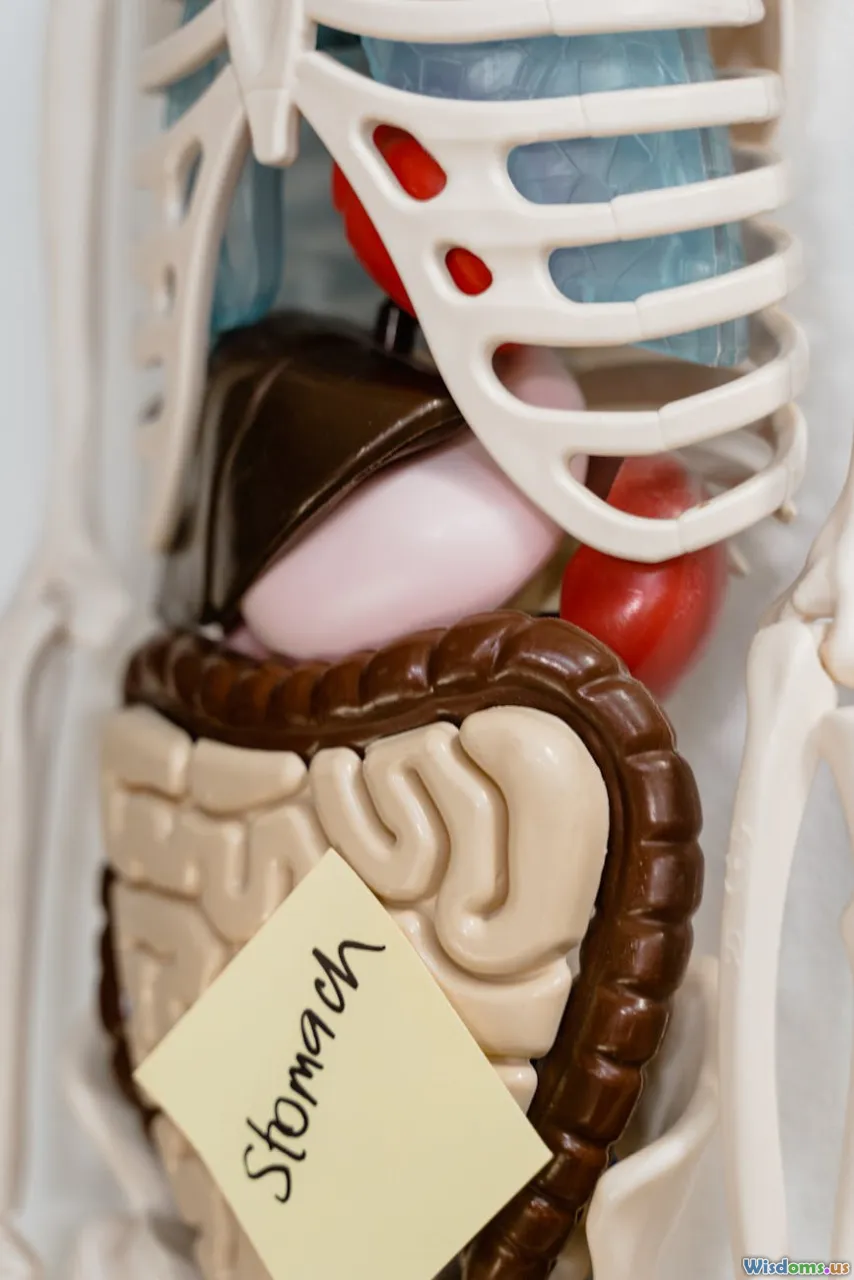
Articulatory phonetics is the scientific study of how humans produce speech sounds. This field focuses not on abstract letters or phonetic symbols, but rather the intricate movements within our vocal tracts. Every time we speak, several anatomical components synchronize—lungs pressurize the air, vocal folds may vibrate, and the tongue, lips, and palate shape the sound.
Example: The 'P' vs. 'B' Sound
Take, for example, the difference between the English sounds /p/ (as in "pat") and /b/ (as in "bat"). These two sounds are produced by closing the lips and then releasing them, but what sets them apart is voicing. For /b/, the vocal cords vibrate; for /p/, they do not. Imagining these mechanics adds a profound dimension to the way we think about speech beyond the mere appearance of written letters.
The Key Players
- Lungs: Provide the airflow essential for speech.
- Larynx (voice box): Houses the vocal folds, which control voicing.
- Tongue: Dynamically changes shape for different sounds.
- Lips and teeth: Aid in forming labial and dental sounds.
- Soft and hard palate: Critical for the distinction between sounds like /k/ (soft palate) and /t/ (alveolar ridge of the hard palate).
Understanding this ensemble forms the core of articulatory phonetics.
Mapping the Vocal Tract: A Guided Tour
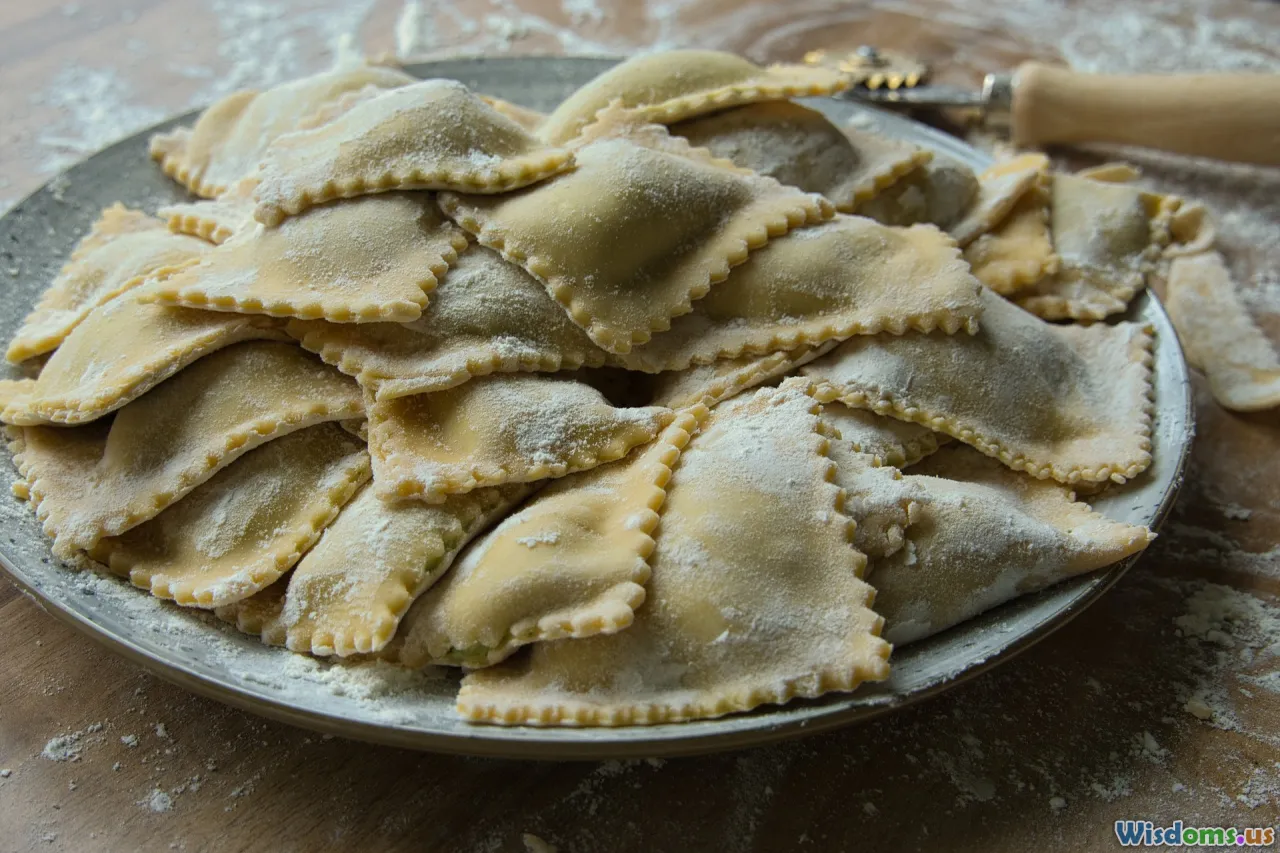
The human vocal tract acts as an incredibly versatile instrument. Scientists map its anatomy by defining "articulators," the moveable and fixed structures which manipulate the airflow to create diverse sounds.
Major Articulators
- Active articulators: Those that move (tongue, lips, soft palate).
- Passive articulators: Fixed locations that serve as sites of articulation (teeth, alveolar ridge, hard palate, upper lip).
Regions and Their Sounds
- Bilabial (both lips): /p/, /b/, /m/
- Labiodental (lip and teeth): /f/, /v/
- Alveolar (tongue and ridge behind teeth): /t/, /d/, /s/, /z/
- Palatal (middle of the tongue and hard palate): /ʃ/ (as in "she")
- Velar (back of the tongue and soft palate): /k/, /g/, /ŋ/ (as in "sing")
By analyzing how each region modifies the airstream, phoneticians can reconstruct the acoustic fingerprint of languages.
Beyond IPA: Exploring Speech Outside the Script

Though the International Phonetic Alphabet (IPA) is a brilliant utility for representing sounds, it cannot capture the full physical experience of producing speech. Technological progress now lets us visualize real-time articulatory movements—using ultrasound imaging, palatography, or electromagnetic devices tracking tongue position. These innovations reveal:
- Coarticulation: The effect neighboring sounds have on each other due to overlapping articulatory gestures. For example, in English, the 'n' in "ten" versus "tenth" moves further back in the mouth before the /θ/ sound.
- Undocumented sounds: Clicks or ejectives in languages like Xhosa or Amharic, which defy standard Latin script conventions but are beautifully represented in video/X-ray imaging.
In short, true insight comes from peering beneath the surface—not from glyphs, but from human mechanics.
Laying Down the Blueprint: Classifying Speech Sounds

Speech sound classification in articulatory phonetics is based on three main parameters:
- Place of articulation — Where in the vocal tract is the airstream constricted?
- Manner of articulation — How is the airstream modified (e.g., stopped, narrowed, diverted)?
- Voicing — Are the vocal cords vibrating?
Table: Manner and Place Overview
| Manner | Examples | Place Examples |
|---|---|---|
| Plosive (stop) | /p/ (pat), /d/ (dog) | Bilabial (lips), Alveolar |
| Fricative | /s/ (see), /f/ (fee) | Dental, Alveolar |
| Nasal | /m/ (mat), /n/ (net) | Bilabial, Alveolar |
| Affricate | /tʃ/ (chip), /dʒ/ (jam) | Palatal, Post-alveolar |
| Approximant | /l/ (let), /w/ (win) | Lateral (tongue side), Labial |
| Click (non-English) | ! (as in Xhosa) | Alveolar, Palatal |
This framework allows linguists not only to describe every possible human speech sound, but also to appreciate what makes each language distinct.
How Accents and Unfamiliar Sounds Are Born

Customized by native languages and enriched by cultural influences, our articulatory habits shape our speech identity. Thus, accents emerge not from laziness or lack of effort, but from deeply habitual articulations honed during early language acquisition.
Why Learners "Have an Accent"
For instance, a native Japanese speaker may pronounce English "l" and "r" similarly, because Japanese lacks the distinction and their articulatory settings don't differentiate between the English laterals and rhotics. Similarly, many English speakers find it tricky to roll their "r’s" in Spanish or Italian—tongue muscle memory simply doesn’t align.
The Art of Mastering New Sounds
Speech therapists and language teachers utilize articulatory phonetics to help learners rewire their habits:
- Visualization: Diagrams and animations showing where to place the tongue or lips.
- Tactile feedback: Tools like "Speech Buddies" or palatal plates help users feel the difference physically.
- Mirror exercises: Learners practice shapes by watching themselves to increase proprioceptive awareness.
This approach extends beyond pronunciation: It supports more convincing acting performances, accurate AI speech synthesis, and deeper cultural empathy.
The Role of Technology: Measuring the Unseen
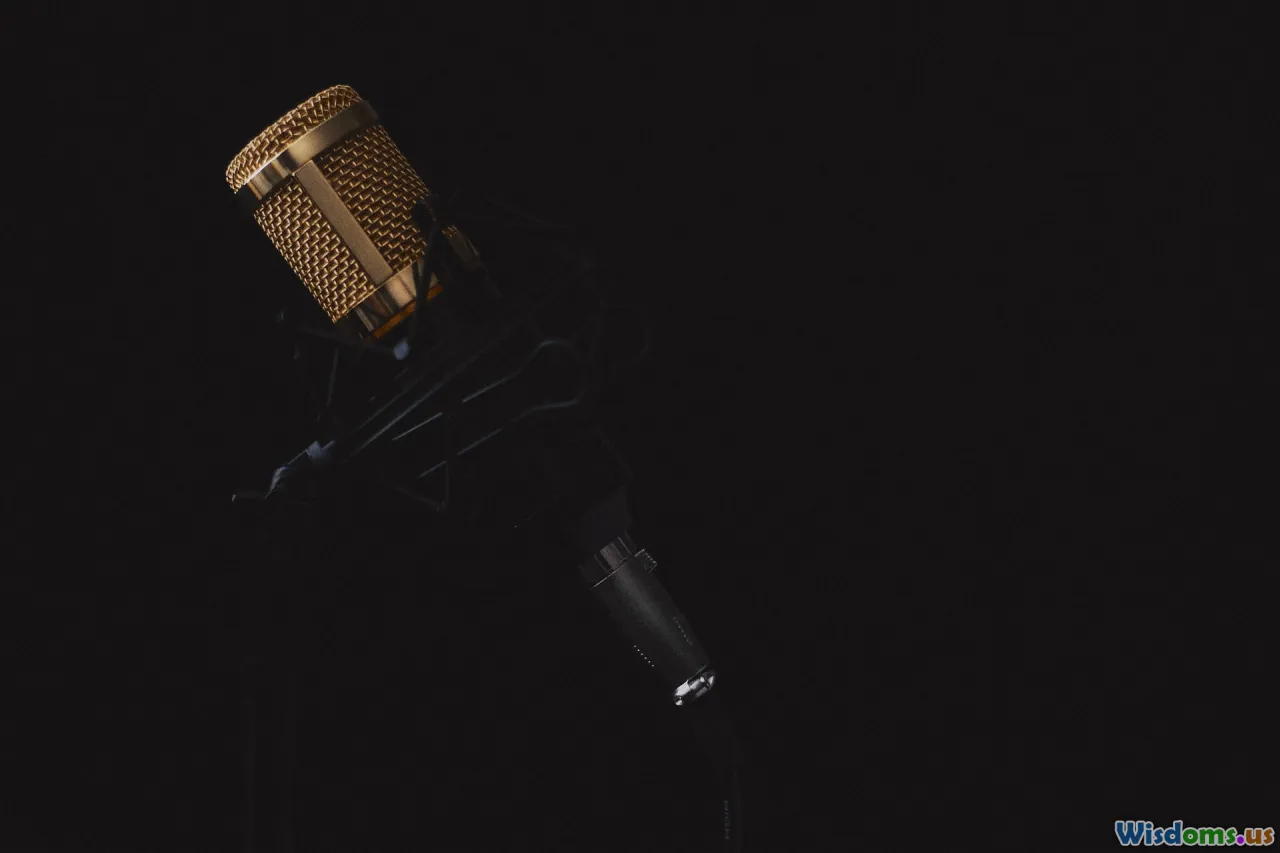
Modern innovations have pulled back the curtain on the invisible complexity of speech. Techniques like:
- Ultrasound tongue imaging: Shows real-time tongue shape during tasks like Scottish "r" or Japanese "sh" sounds, offering valuable diagnostics for clinicians.
- Electropalatography (EPG): Custom dental plates embedded with electrodes record palate-tongue contact, pinpointing inaccurate articulations in patients with speech disorders.
- MRI of the vocal tract: Non-invasive snapshots that help researchers model accents, pathological voices, or even reconstruct extinct languages’ probable sound profiles.
Beyond research labs, mobile speech apps now use acoustic analysis to map subtle pronunciation errors—bridging the gap between abstract phonetic theory and day-to-day communication hurdles.
Unusual Sounds: The Palette of Global Speech

When most people think of language, they picture a narrow band of familiar sounds. Yet the world is teeming with phonetic diversity: ejective plosives that pop, uvular trills that rumble, or bilabial clicks that snap.
Exotic Consonants
- Clicks: Widely used in Southern African languages, these sounds don’t occur in English phonology. Xhosa or Zulu can feature several click types as regular consonants.
- Retroflexes: Characteristic of languages in India, these involve curling the tongue tip back toward the palate (/ʈ/, /ɖ/).
- Ejectives: Found in languages like Georgian and Haida, these sharp sounds are produced without lung airflow, but by rapidly releasing trapped air above the glottis.
Vowel Adventures
The English vowel system, with its celebrated minimal pair—"sheep" vs. "ship"—doesn’t approach the complexity of Danish, which has 20+ vowel distinctions, or languages like !Xóõ (Botswana) where voices dance from deep growls to light whistles.
Why It Matters
Preserving and studying these riches is vital not just to catalog linguistic heritage, but to stretch the boundaries of speech AI, theatrical performance, and even musical creativity (think overtone singing in Mongolia or Inuit throat songs).
Actionable Insights: Bringing the Science Into Practice
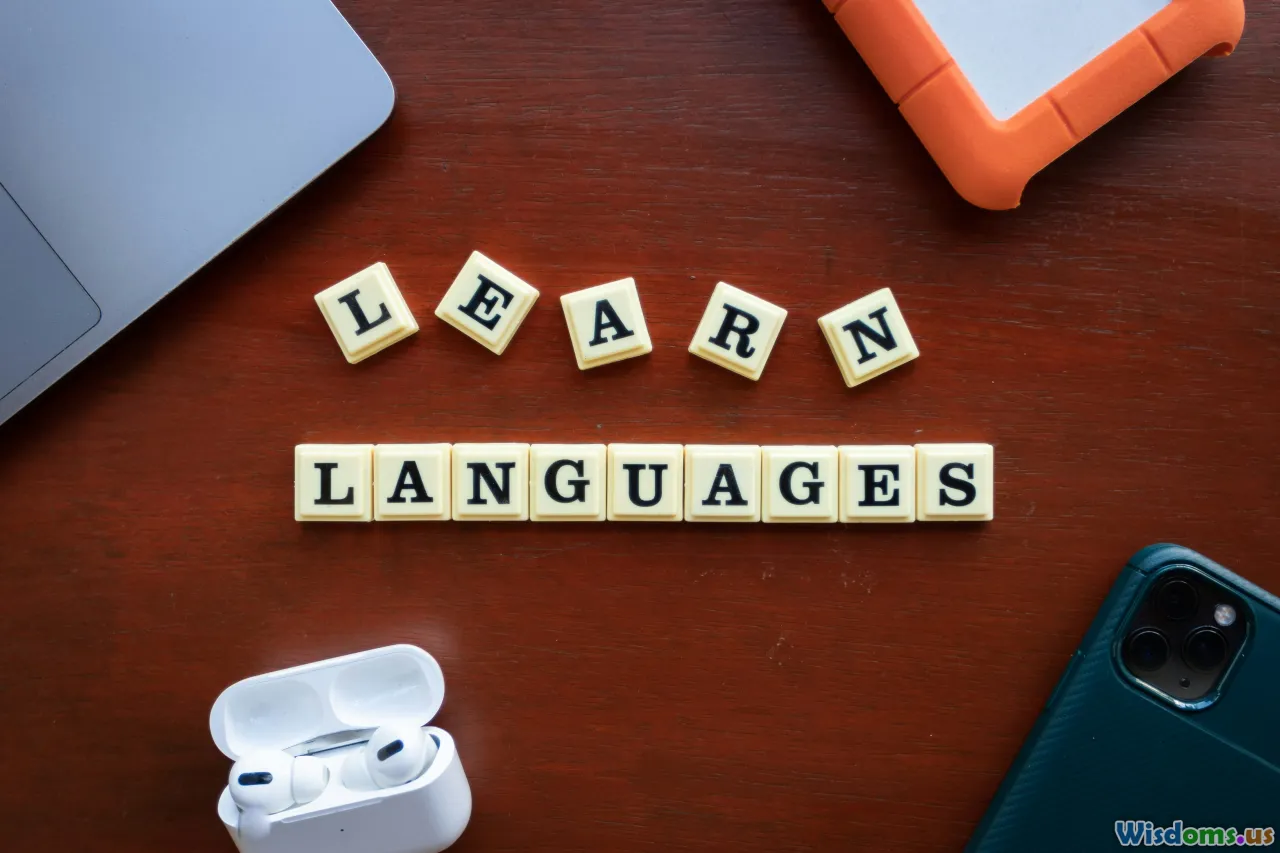
Curious how articulatory phonetics can inform your own learning, teaching, or communication habits? Here are some evidence-based approaches for diverse audiences:
For Language Learners
- Phonetic transcription: Practice with IPA or X-SAMPA transcriptions to create a cognitive mapping from written text to articulated sound.
- Mimicry using spectrograms: Online tools such as Praat let you visually compare your speech’s waveform with a native model, supporting mindful correction.
- Listen, shadow, analyze: Repeat, record, and analyze the physical aspects of challenging words—especially those containing trills, clicks, or tones.
For Teachers and Coaches
- Provide tactile feedback: Use straws for students practicing rounded vowels or soft pencils to teach alveolar trills.
- Create visual aids: Mouth diagrams, GIFs, and physical models demystify tongue places and manners for beginners and pros alike.
For Speech-Language Therapists
- Track progress: Use EPG or mobile acoustic apps to chart minute improvements that are hard to perceive by ear alone.
- Personalized pathways: Every patient’s articulatory set is unique; therapy often requires unlearning old patterns, carefully neutralizing unwanted assimilations or coarticulations.
For Actors and Singers
- Deliberate training: Practice rare articulations (like velaric ingressive clicks or rolling Italian Rs) to unlock tough accents or performance styles.
- Biofeedback: Use recording devices and articulatory diagrams to calibrate vocal projection, resonance, and clarity for the stage.
Incorporating articulatory phonetics multiplies your toolkit for mastering accents, reducing miscommunication, and even protecting your vocal health.
Articulatory Phonetics Shaping the Future

Phonetics is no longer just the reserve of academics; it shapes the technology and society of tomorrow:
- Voice assistants: Refining recognition engines to be accent-inclusive, reducing bias against non-standard pronunciations.
- Language revitalization: Reviving endangered tongues by accurately documenting and teaching their unique phonetic blueprints to new generations.
- Speech synthesis and AI: Algorithms now learn not just what to say, but how to say it—modeling emotion, intention, and even personality by fine-tuning minute articulatory parameters.
- Clinical advances: Next-generation prosthetics and neural interfaces, which translate silent articulation (mouthed speech) into spoken words, could restore communication for people with severe disabilities.
Articulatory phonetics isn't a mere academic curiosity; it is practical, powerful, and transformative—a bridge between body, speech, and society.
Speech is our most ancient art, a subtle craft of muscles and air. When you pause to savor the flavors of new sounds, wrestle with tricky accents, or marvel at technology’s ability to recreate a human voice, you are taking part in a tradition as old as language itself. The journey beyond the alphabet enriches not just your mind, but your humanity.
Rate the Post
User Reviews
Other posts in Phonetics & Phonology
Popular Posts










